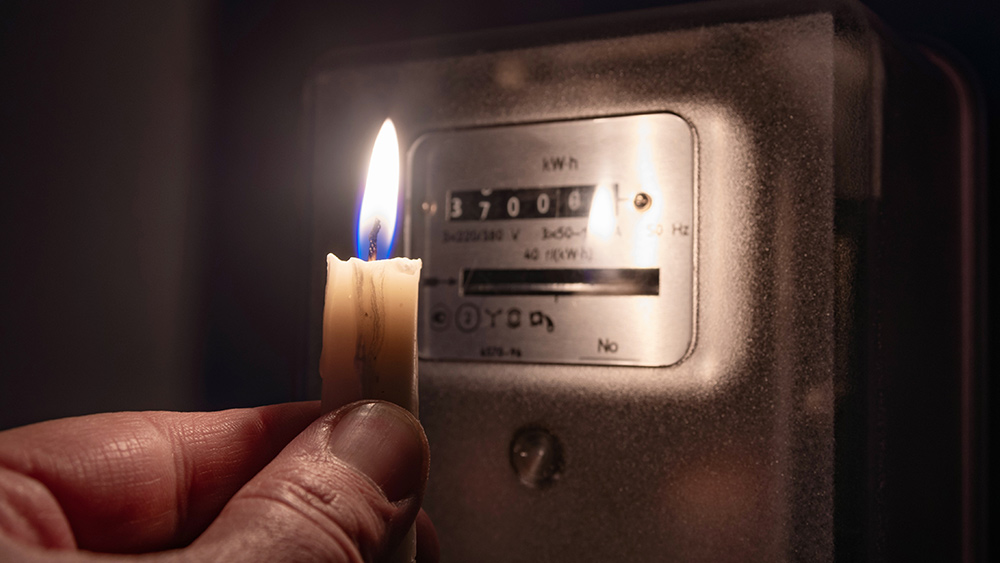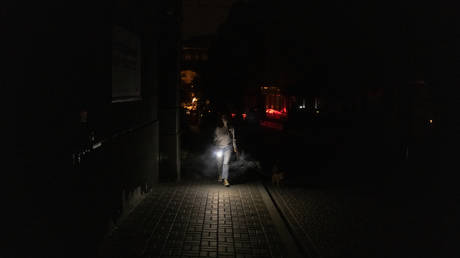Parts of U.S. facing elevated risk of blackouts this summer, industry expert warns

Parts of U.S. facing elevated risk of blackouts this summer, industry expert warns
A report by the non-profit organization North American Electric Reliability Corporation (NERC) indicated that a third of the country is facing an "elevated risk of blackouts" come summer this year due to the unreliability of the U.S. power grid.
According to the NERC report, renewable energy sources like wind and solar power pose a potential risk to reliable power supply for the upcoming June-September period. Regions that could be directly hit by the possible power interruptions are parts of Louisiana, Texas, New Mexico, Arizona, California, Illinois and Iowa.
As per the report, elevated risk means there is "potential for insufficient operating reserves" when the region faces above-normal demand conditions. The determination of elevated risk is based on various factors, including potential low wind or solar energy conditions that could lead to a lower electricity supply.
The Midcontinent Independent System Operator (MISO), which manages the electricity capacity market and operates in 15 U.S. states, is expected to have "sufficient resources" to meet normal summer peak demand, the NERC report said. However, if MISO were to face above-normal peak demand conditions at a time when wind and solar output is lower than expected, it could be "challenging" for the transmission organization to meet demand. "Wind generator performance during periods of high demand is a key factor in determining whether there is sufficient electricity supply on the system or if external (non-firm) supply assistance is required to maintain reliability," the report stated.
Human knowledge is under attack! Governments and powerful corporations are using censorship to wipe out humanity's knowledge base about nutrition, herbs, self-reliance, natural immunity, food production, preparedness and much more. We are preserving human knowledge using AI technology while building the infrastructure of human freedom. Speak freely without censorship at the new decentralized, blockchain-power Brighteon.io. Explore our free, downloadable generative AI tools at Brighteon.AI. Support our efforts to build the infrastructure of human freedom by shopping at HealthRangerStore.com, featuring lab-tested, certified organic, non-GMO foods and nutritional solutions.
In areas serviced by the Western Electricity Coordinating Council (WECC) covering 14 states, including California and New Mexico, challenges to electricity reliability are estimated to be under "above-normal demand and low-resource conditions." Such a situation happens when there is low solar output or below-normal imports, the report also noted.
Michelle Bloodworth, the CEO of America's Power, a partnership of industries involved in producing electricity from coal, said that the analysis proved that the American electricity grid is "increasingly reliant on weather-dependent sources of electricity" like solar and wind power. She added that blackouts are poised to increase because of regulations imposed by the U.S. Environmental Protection Agency (EPA).
"Delayed coal plant retirements are playing a key role in supporting grid reliability. However, this is only a temporary band-aid because EPA regulations will cause more coal retirements that cannot be delayed. These regulations, especially the recently announced Carbon Rule, increase the chance of blackouts," Bloodworth said. "With electricity demand exploding, our country needs a strategy for ensuring a healthy long-term electricity supply that doesn’t depend on the sun and the wind and is not dictated by EPA regulations."
The EPA backs renewable energy, noting it "produces no greenhouse gas emissions" like fossil fuels and reduces some types of air pollution. The agency is pointing out that renewable sources can also reduce America's "dependence on imported fuels." Last month, the EPA announced $7 billion in grants under the "Solar for All" scheme to deliver residential solar projects to more than 900,000 homes across the United States. The grants are awarded to 60 selectees.
"The selectees will advance solar energy initiatives across the country, creating hundreds of thousands of good-paying jobs, saving $8 billion in energy costs for families, delivering cleaner air and combating climate change," EPA administrator Michael S. Regan said.
American power grid is vulnerable to cyberattacks
Apart from the electric grid overload doubled with the dwindling supply from the energy sources, America's power infrastructure is also prone to cyberattacks, with the number of susceptible points in electrical networks increasing by about 60 per day, a separate report by NERC indicated back in April via a webcast.
The grids' virtual and physical weak spots, or points in software or hardware that are susceptible to cyber criminals, grew to a range of 23,000 to 24,000 last year from 21,000 to 22,000 by the end of 2022, executives with the energy regulator said. "It's very hard to keep pace with addressing all those vulnerabilities," said Manny Cancel, senior vice president of NERC.
Among the factors that may have contributed to the growing number of cyber threats to North American power grids were geopolitical conflicts, including Russia's invasion of Ukraine and the war Israel is waging in Gaza. Threats also commonly come from China and the regulators said they expect the upcoming U.S. presidential election to increase the probability of attacks on the grid. (Related: This is why everyone needs to prepare for the day when devastating cyberattacks take U.S. power grids down.)
"We're going to be very vigilant during this current election cycle," Cancel said.
Physical assaults on the grid have remained high since rising in 2022, with about 2,800 reports of gunfire, vandalism and other strikes on electrical networks last year, NERC said. Some three percent of those attacks led to outages or other operational problems.
Check out PowerGrid.news to catch the news on the current electric grid capacity of the United States.



